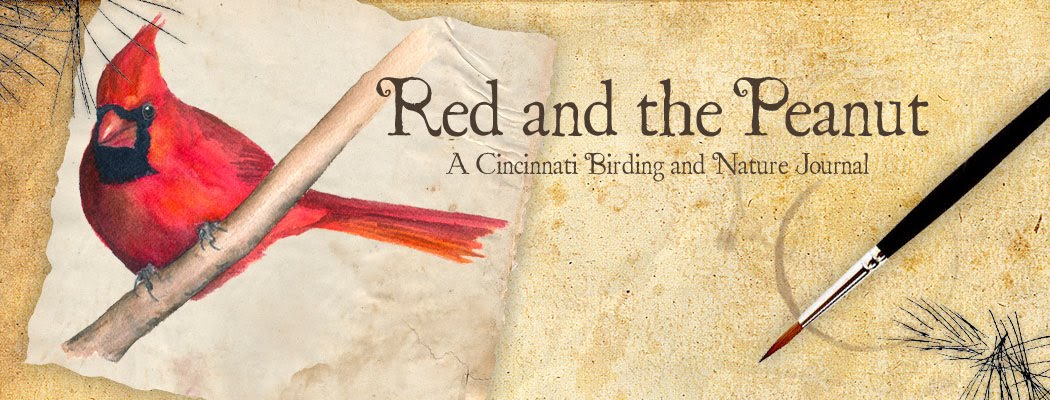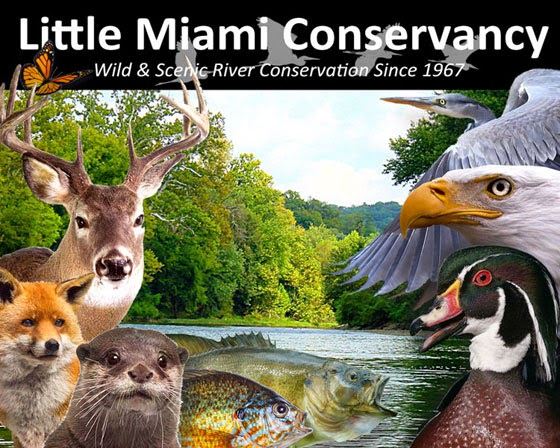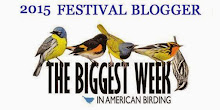A drizzly, cool afternoon didn't deter this Cape May Warbler from singing his cheerful spring song. He and several other males piped out their high-pitched notes from the trees bordering the parking lot at Magee Marsh. With his bright, golden yellow plumage and lovely clear song, he was an easy mark, and I saw him as soon as I stepped out of my car...
 |
| A Cape May Warbler sings under a heavy gray sky along the parking lot at Magee March in the early afternoon on May 12, 2015. |
Cape May Warblers are birds I don't see very often. They migrate through our state in a hurry to get north to their nesting grounds in the forests of Canada and the northern United States, but they always hang out for a bit at Magee Marsh along Lake Erie to refuel and rest up for the last leg of their journey. According to Peterjohn's "The Birds of Ohio," p 430, Cape Mays pass through Ohio between May 5 and May 22. I saw this fellow and about 10 others during the
Biggest Week in American Birding on May 12.
At the end of the season, Cape Mays head south for the winter. I read on Cornell's
All About Birds and
The Birds of North American Online web sites that their destination is the West Indies, where they will spend the winter sipping nectar from flowers with their "unique curled, semitubular tongue." During migration and on their wintering grounds, they also will pierce fruit to drink the juice.
...wait, what? A warbler with a curled, semitubular tongue?
That deserves a few look-ups to learn more. I wondered if a Cape May's tongue worked like a hummingbird's tongue where capillary action drew the liquid up. I couldn't find anything on the physics of a Cape May Warbler's tongue, but I did find an illustration of one. It has fringe at the tip, which looks like it might help the warbler trap nectar so the bird can lap it up.
Click here for "The Avian Tongue," by Nancy E. Johnston June, 2014 and go to Figure 12 on page 8 for an illustration.
Interesting: While researching the Cape May Warbler's tongue I found new research on the way a hummingbird gets nectar from a flower. In the article, "How the hummingbird's tongue really works," by Deborah Braconnier, you can read about the research of Associate professor of ecology Margaret A. Rubega and graduate student Alejandro Rico-Guevara from the University of Connecticut. Using a high-speed camera, they found hummingbirds do not use capillary action (assumed since 1833) to take in nectar. Instead, they curl their tongues to trap liquid. It's an unconscious, automatic effort that requires no energy by the bird.
Click here for the entire article and a video of the hummingbird's tongue in action.
 |
| In the summer while nesting, Cape May Warblers prefer insects and spruce budworms, but during migration and in the winter, when they return south to the West Indies (Cuba, Bermuda, Caymen, Puerto Rico, Virgin Islands, etc.), they turn to nectar to supplement their diet. Their unique tongue allows them to make the transition. |
 |
| During fall migration, Cape Mays have been seen on hummingbird feeders. I'd love to have one show up at ours! |
 |
| A Cape May Warbler looks out over the parking lot at Magee Marsh. |
For more information...
Click here for "The Avian Tongue," by Nancy E. Johnston June, 2014. (Figure 12 on page 8 has a nice drawing of a Cape May Warbler's tongue.)
Click here for the report "Status of Cape May Warbler in British Columbia," by J.M. Cooper, K.A. End, and M.G. Shepard. Wildlife Working Report No. WR-82, February 1997.
Click here for the paper "Population Ecology of Some Warblers of Northeastern Coniferous Forests," by Robert H. MacArther, Ecology, Vol 39, No 4 (Oct., 1958), pp. 599-619
Click here for Gardner, L.L. "The adaptive modifications and the taxonomic value of the tongue in birds." Proceedings of the United State National Museum, 1925: 67:Article 19.
Click here for Lucas, Frederic A.
"The Tongue of the Cape May Warbler."
The Auk,
Vol. 11, No. 2 (Apr., 1894), pp. 141-144.
Click here for the Cape May Warbler's song.





























































